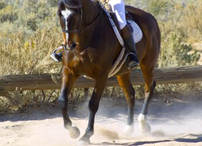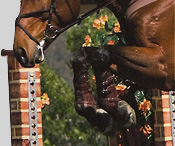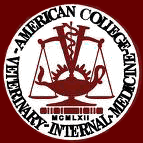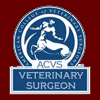



DENTISTRY

Nutrition and Dental Health
Many of you have asked me “how do the Mustangs survive without dental work?” Here’s the answer: they chew more. The equine tooth evolved some 25 million years ago in response to changes in the earth’s vegetation. Available forage went from soft leaves to tough, fibrous grasses. In order to adequately break down this material, the horse developed hypsodont teeth, which erupt continuously throughout life. Each tooth is worn down by rubbing against an opposing tooth, creating an ever changing biting surface with ongoing wear of these surfaces determined by the horse’s diet and chew cycle.
Three factors contribute to wear of the horse’s teeth: the interaction between the two biting surfaces, the time spent chewing and the nature of the material being chewed. Research has shown that horses at pasture chew more and with more lateral (side to side) motion than horses fed a mixed hay/grain diet. Specifically, horses eating hay chew 58-66 times per minute vs. horses at pasture which chew 100-105 times per minute! In addition, horses eating a strictly forage (hay) diet require 16 hours to chew their daily nutritional needs while horses on high concentrate with some hay diets require only 6.1 hours to consume their daily feed requirement.
So our performance horses chew slower, for less time, and less effectively than their mustang counterparts. Therefore, they don’t do a good job of floating their own teeth, and small dental abnormalities that would self-correct on a tough fibrous grass diet (mustangs) become serious dental issues without regular dental care in our horses living in confinement.
And that’s one reason why an annual dental examination is an important part of your horse’s preventative care.
Dental Examinations & Floats
If you expect your horse to have a dental examination or a tooth float, please withdraw food one hour before your appointment. There are two types of dental examinations, a brief dental exam and a complete oral exam.
For a brief dental exam your horse may not need to be sedated. Dr. Chrysann Collatos will evaluate incisor alignment and feel the outer edge of the first upper premolars. She will then open the mouth and perform as thorough a visual examination of the remainder of the mouth as is possible. Such a brief dental exam is useful to assess the need for a routine tooth float, but may not reveal abnormalities present in the back of your horse’s mouth.
For a complete oral exam, the horse will be lightly sedated and a full mouth speculum inserted to hold his mouth open for the veterinarian. Dr. Collatos can then use her hand to palpate each tooth and evaluate the precise balance of your horse’s bite to determine what work, if any, is needed on a tooth by tooth basis. Any serious problems noted in the oral exam may be further investigated by radiography which we always have available in the truck. Often these exams are followed by a routine tooth float.
During a tooth float Chrysann will carefully reduce any dominant teeth and even out the chewing surface with a titanium coated tooth float. Dominant teeth create and are created by abnormalities in the chewing surface, or dental arcade, in your horse’s mouth which worsen over time and impede chewing and normal jaw movements. Some common configurations she may correct are hooks, ramps, transverse ridges and a wave which is caused by multiple dominant teeth. She will then adjust the alignment of the incisors, as small changes in the incisors will make a large difference in the occlusion at the back of the mouth. The specialized hand floats which Dr. Collatos uses are exceptionally sharp, and allow her to carefully balance each tooth in the mouth individually.
Older horses (over 20) may need teeth removed. This is because with advanced age once a horse’s teeth are worn away, they push to the surface and expire. These loose teeth can cause pain, poor appetite weight loss and infection. For this reason, expect your older horse to need a thorough dental exam at least once a year. Tooth root problems in younger horses are do occur, and usually are accompanied by clinical signs including foul smelling nasal discharge for upper teeth, and painful swelling or draining wounds along the jaw line for lower teeth.
Overall, the goal of tooth floating is to balance the horse’s bite. This allows free movement, both lateral (side to side) and anterior/posterior (front to back) of the temporomandibular joint (TMJ) which insures not only correct chewing of food, but also comfort during performance, especially when carrying a bit and working in a “frame”, “on the bit”, or with a “head set”.

Emergency Vet
(775) 742-2823
Email us at
hidvet@gmail.com


CASE STUDY:
Above X-rays
These x-rays show a severe dental imbalance that developed over many years of inadequate dental care. The extremely tall lower molar, seen as the "hill" in the slope of the dental arcade, functions as a lock, preventing any rostral/caudal (front to back) motion of the top jaw over the bottom jaw. As a result, the temporomandibular joint (TMJ) loses normal mobility. This horse, at the age of 21, stopped eating and demonstrated signs of pain when chewing.
Complete correction of this problem is not possible, or desirable, due to the horse's age and the chronicity of the problem. Using a specially designed long hand float, Dr. Collatos reduced the height of the offending molars just enough to improve the horse's TMJ mobility. This gentle correction was repeated every 6 weeks. The horse's appetite and attitude improved after the first dentistry, and continued to do so over the long term.
Incidentally, this horse's teeth had been floated every 6 months for the previous 10 years by someone not using a full mouth speculum. The horse was difficult to handle even with sedation, and without a complete oral exam only possible with a full mouth speculum this severe bite imbalance developed and went undetected. With careful sedation and a full mouth speculum, Dr. C was able to improve this horse's function and comfort without difficulty using hand floats.
PO BOX 60730
RENO NV 89506
EMERGENCY (775) 742-2823 OFFICE (775) 969-3495
FAX (775) 969-3923




